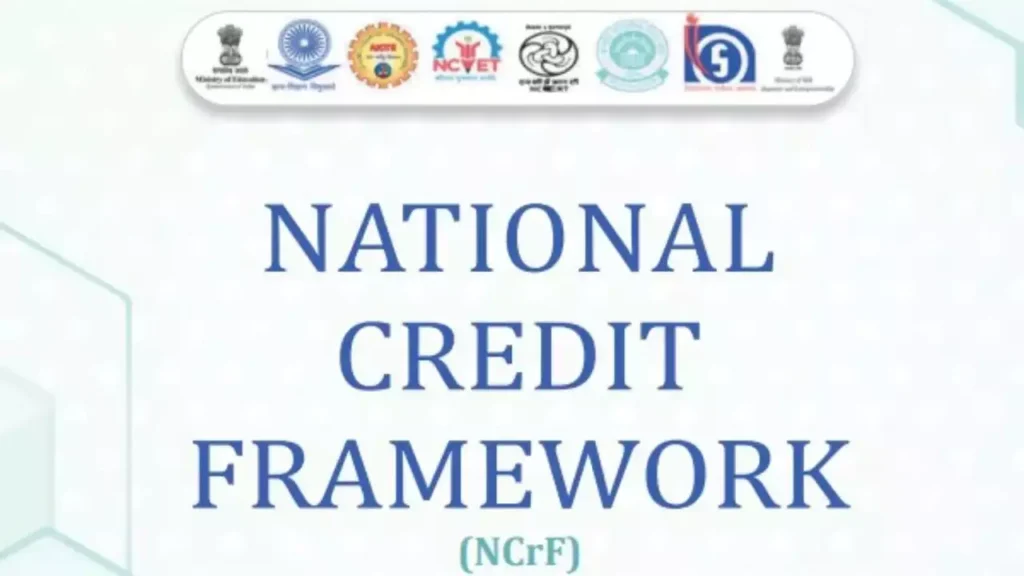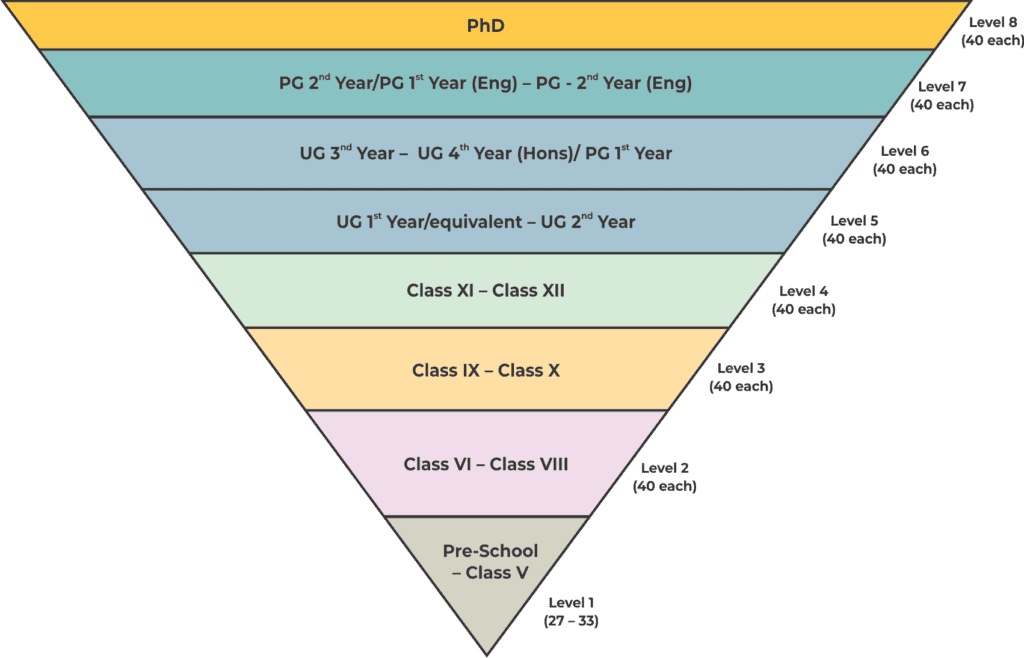
What Is The National Credit Framework NCrF ?
National Education Policy (NEP) 2020 was introduced in September to bring a revolutionary change in the Indian Education System. The policy not only talks about a child’s education but also covers their overall development.

How National Credit Framework NCrF Works?
In today’s news, Dharmendra Pradhan (Union Education Minister) launch National Curriculum Framework. In this the Central Government of India advocated credit-based courses and framework for higher education. National Credit Framework (NCrF) brings the education system back into an academic credit regime.
Various stakeholders of the education system have agreed upon some major features of NCrF in the meeting held by the National Council for Vocational Education and Training (NCVET) July 13th, 2022.
The credit-based framework has been proposed in which Class 5 will be taken as Level 1, Class 8 as Level 2, Class 10 as level 3 and Class 12 as Level 4. Look at the table given below to understand better.
For Example: When a student passes Class 10 board examination, they will be clearing Level 3. Gradually, when students will pass higher education exams, their credits will keep on increasing simultaneously.

The National Credit Framework (NCF) 2022 is a comprehensive system designed to align with and support the goals outlined in the National Education Policy (NEP) 2020. This framework aims to streamline and standardize credit systems across various educational institutions in the country, facilitating mobility, flexibility, and transparency within the education sector.
Key features of the NCF 2022 include:
- Credit Transferability: The framework ensures that credits earned by students are transferable across institutions, allowing learners to seamlessly move between different educational programs and institutions without losing progress.
- Credit Accumulation: It provides a mechanism for students to accumulate credits over time, recognizing their achievements and progress within their chosen educational pathways.
- Credit Recognition: The NCF 2022 establishes clear guidelines for the recognition of credits earned through formal, non-formal, and informal learning experiences, promoting inclusivity and recognizing diverse learning pathways.
- Quality Assurance: The framework includes mechanisms for quality assurance to ensure that credits awarded by different institutions maintain consistent standards and rigor.
- Flexibility: It allows for flexibility in curriculum design and delivery, enabling institutions to offer a variety of learning experiences while ensuring alignment with national educational objectives.
- Transparency: The NCF 2022 promotes transparency by providing clear guidelines and criteria for credit evaluation, transfer, and recognition, enhancing trust and confidence in the education system.

- Vision of NEP 2020:
- Emphasizes holistic education integrating general (academic), vocational, and experiential learning.
- Aims to establish a national credit accumulation and transfer system to ensure mobility between general and vocational education systems.
- Development of NCrF:
- Jointly developed by UGC, AICTE, NCVET, NIOS, CBSE, NCERT, Ministry of Education, DGT, and Ministry of Skill Development.
- Designed to align with the vision and intent of NEP 2020.
- Comprehensive Framework:
- Encompasses elementary, school, higher, and vocational education and training.
- Integrates academics, vocational skills, and experiential learning.
- Inclusive Integration:
- Serves as an umbrella framework integrating credits earned in school education, higher education, and vocational and skill education.
- Includes qualification frameworks such as NHEQF, NSQF, and NSEQF.
- Game Changer:
- Implementation of NCrF aims to remove distinctions between general and vocational education.
- Promotes flexibility, mobility, and academic equivalence between the two systems.
- Facilitates progression and inter-mingling of different education streams.
- Broad-Based Education:
- Promotes multi-disciplinary, holistic education.
- Allows for imaginative and need-based curricular structures and combinations of subjects.
- Utilizes existing regulations, guidelines, and qualification frameworks of relevant educational bodies.
- ME-ME Options:
- Enables Multiple Entry-Multiple Exit (ME-ME) across higher education, school education, and vocational education.
Classification of National Credit Framework (NCrF)
So far, no hard separation has been done between curricular and co-curricular activities. There are 5 categories included in NCrF:
- Classroom teaching/ learning/ laboratory work/ class projects
- Sports and games, yoga, physical activities, performing arts, music, handicraft bag, and bag less days
- Yearly/ half yearly examination/ class tests/ quizzes, assessments
- Vocational education and training, skilling, field visits, minor/ major project work
- Job training/ internship/ apprenticeship/ experiential learning

By implementing the National Credit Framework, educational institutions can enhance the overall effectiveness and efficiency of the education system, promote lifelong learning, and empower students to pursue diverse educational pathways aligned with their interests and goals. This framework plays a crucial role in realizing the vision outlined in the National Education Policy 2020, fostering a dynamic and inclusive education ecosystem that equips learners with the skills and knowledge needed to thrive in the 21st century.
Questions
- What is the significance of the National Credit Framework (NCrF) in India’s education system?
- How will the National Credit Framework (NCrF) revolutionize skill development in India?
- What are the key features of the National Credit Framework (NCrF) and how will they impact students?
- How can educational institutions effectively implement the National Credit Framework (NCrF)?
- What are the potential challenges of implementing the National Credit Framework (NCrF) in India?
- What is the National credit Framework?
- What are the salient features of National credit Framework NCrF )?
- What are the maximum credit levels proposed as per NCrF framework?
- What is the credit system in NEP?







